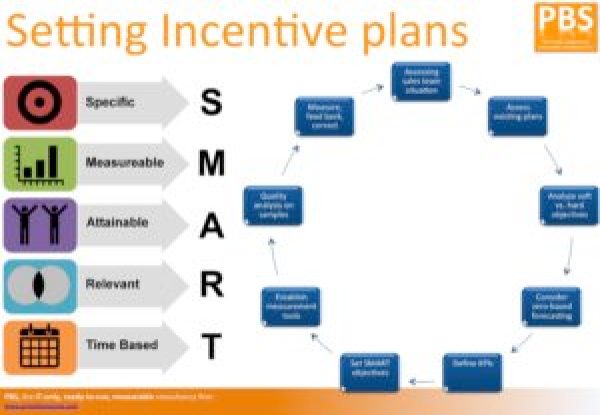
Incentive plans
Many businesses often fail to set accurate sales targets. A standard method is to simply look at the previous year’s revenue and add what appears to be a reasonable rate of growth. However, this does not provide a full picture as it does not take into account variables and therefore can lead to an unreasonable, unattainable figure.
Setting unrealistic or inaccurate sales targets can have a major impact on a business. Not only can it affect cash flow, but also it can ruin management’s credibility and leave sales teams lacking motivation, either because they consistently underachieve or easily over-achieve.
In order to accurately set sales targets, organizations should consider adopting a variation of zero-based forecasting, where each period is treated independently, free from strong historic biases. While it can be initially more difficult to implement, its results outperform other methods and the process becomes much easier in subsequent years.
Consider the following five factors to set realistic sales targets:
- Business situation. Every business is different. That’s why it’s important to start by considering which factors affect your revenue quarter-by-quarter. Is your business seasonal? Do you operate in volatile markets? Do you have a strong recurring revenue stream built in? Is your business contract driven? Does your business have high cogs or high margins? To create a more accurate forecast that’s tailored for your business, consider all of these factors, plus life cycle of your product or service portfolio and customer mix.
- Economic factors. What is happening in your industry and the wider economy that could have an impact on revenue? Be as thorough as possible in your evaluation of the variables that may impact either your revenue or the performance of your sales reps.
- Revenue per rep. Take a look at what each rep generated in the previous year and, if available, the year before that. Collect or estimate customer share of wallet for their accounts which could be indicative of future potential. Based on this data, you should be able to create best-case scenarios, worst-case scenarios and an average of the two. Use the average figure to influence your sales targets and the best-case to set bonuses.
- Solicit feedback. Once you set revenue targets and individual sales goals for reps, it is important that you solicit their feedback. As your frontline employees, they may provide objections or highlight variables that you have not considered.
- Implement a rolling forecast. Despite the well-documented advantages of rolling forecasts, most companies still do traditional forecasting based on a preset annual or quarterly schedule. That preset approach turns the forecasting process into one of performance evaluation as opposed to elevating the opportunities and risks ahead. That leads to organizations losing forward visibility on their opportunities. To overcome this disadvantage, consider using rolling forecasts with consistent periods in each forecast window.
If your expectations are not in tandem with what you can reasonably expect from your sales force, you will of course have to consider hiring new staff. With this comes a series of other factors that need to be considered, such as ramp-up time.
We are expert in sales forecasting and setting incentive plans. Contact us with confidence to support you!
Here follows more information on this service (click on the image to enlarge it!)

